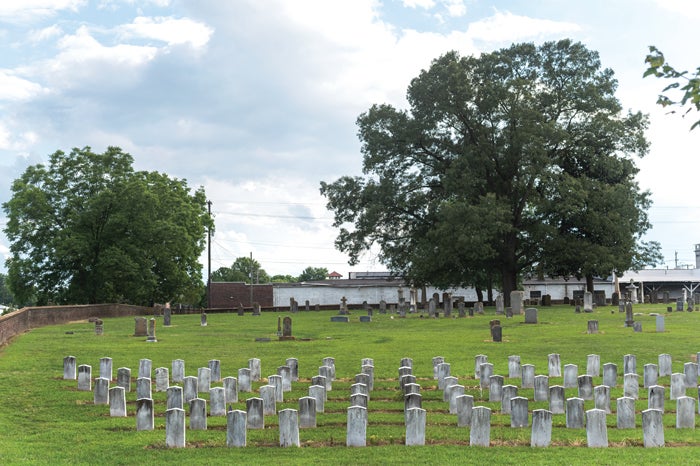My Turn, Ed Norvell: Setting the record straight on ‘Fame’ relocation
Published 12:00 am Sunday, August 16, 2020

- Josh Bergeron / Salisbury Post - The historic cemetery on North Lee Street where “Fame” will be relocated.
By Ed Norvell
I respectfully disagree with my friend Ronnie Smith regarding the move of the Confederate monument “Fame” as he wrote in his My Turn on Tuesday (“Put ‘Fame’ on the ballot in November”). I was involved in the negotiations that led to the move, finding a new location and raising the money needed for the move. I mean no disrespect for Ronnie, a Vietnam veteran who I have known most of my life. He and his family have been incredibly generous to our community and his father was one of the founders of Food Lion.
But I do want to set the record straight regarding matters of which I have personal knowledge.
I have ancestors who fought on both sides of the Civil War. My father’s great-aunt Flora K. Overman helped raise the money to erect the statue in 1908.
I believe it was time to move the statue from West Innes Street. It had become a lightning rod for violent confrontation, vandalism, gunshots and community pain and division. It was time to move it and the beautiful part is that we came together as a community to make it happen.
Considerable effort went into the selection of the site where it will be relocated. I reached out to descendants of the families that raised money to erect the statue in 1908 and others and we had a lively discussion. Everyone agreed that it needed to be moved, but the question was where? It was too big for the Rowan Museum or the old English cemetery. We looked into Chestnut Hill Cemetery, and it is full.
As for the National Cemetery, it would take an act of Congress for that to happen. We also considered Veteran’s Concourse at city park that honors United States veterans of all wars, but the Confederacy fought in rebellion against the United States.
It was decided that the historic cemetery on Lee Street was the best site. The city owns and maintains it, it is the oldest cemetery in Salisbury and there are 175 markers honoring the Confederate war dead, who died in Salisbury serving at the prison and who died in the Confederate Wayside Hospital near the railroad. These stones were erected by the Robert F. Hoke Chapter of the UDC in 1996 and they look like a small national cemetery. Also Col. Charles Fisher, for whom Fort Fisher is named, is buried there. There are also other graves in the cemetery of men who fought in the war.
Safety was a concern, so plans were made to build a wrought iron fence, lighting and security cameras to protect it from vandalism. I personally think it is a beautiful and peaceful spot.
The mayor, city council, city manager, city attorney and city staff worked hard on this effort. When community leaders reached out to the Robert F. Hoke Chapter of the United Daughters of the Confederacy (UDC), the owners of the monument, they responded and began a dialogue with the city.
On August 6, 1908, the town aldermen of Salisbury granted a perpetual right to erect and maintain a statue in the median on West Innes Street. The resolution was not recorded at the register of deeds until March 22, 1927. The UDC had what some called a deed and others called an easement on a portion of the median. They also clearly owned the monument itself.
According General Statute 100 – 2.1 regarding protecting historic monuments, monuments like “Fame” could not be moved without state approval, but there are exceptions such as when it is privately owned, on private property. In that case, it could be moved with the approval of the private owner and the city or county government.
That is exactly what happened in Salisbury when the UDC and a unanimous city council entered into agreement to move the monument to the cemetery. In the agreemen, the UDC would release their rights to the property in the median and the city would give them a warranty deed to a parcel in the cemetery.
The city would pay to move and store the monument and private funds would be raised for the improvements, including a concrete pad with brick pavers, an 8-foot wrought iron fence, security lights and cameras.
My job was to raise the private money. I raised close to $65,000 in less than 24 hours from descendants of the original families that erected the monument and from other community leaders. After the city council approved the agreement, the NAACP formally endorsed the plan and the Hoke chapter signed the agreement with the approval of the national president general of the UDC.
As for the suggestion that the move be put on the ballot in November as a referendum, North Carolina law does not allow issues like this to be decided by referendum — only issues authorized by the legislature, such as school or water, sewer bonds, the creation of Fibrant, changes to a city charter or the sale of alcohol are allowed.
All other matters are decided by local and state elected officials.
Ed Norvell lives in Salisbury.

